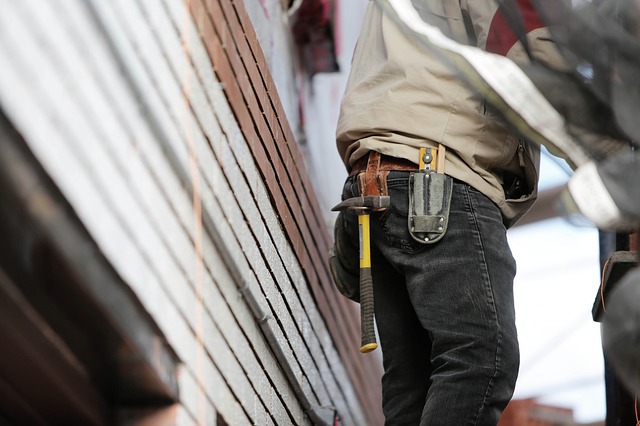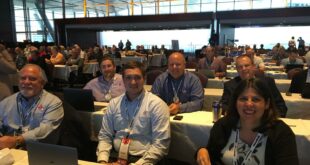What Sprinkler Contractor Owners Need to Know
The American Fire Sprinkler Association (AFSA) is an industry association that exists primarily to represent the interests of open shop fire sprinkler contractor owners. In context, it is important that each sprinkler contractor owner fully understand that the applicable building codes and their adopted National Fire Protection Association (NFPA) standards serve a dual purpose. Each NFPA standard provides not only the technical requirements for various agent-based systems, but also provides a codified trail of protection for the sprinkler contractor. It is these codified trails of NFPA that you need to fully understand.
You also need to understand the adoption process. It is the adoptions by your local applicable building codes that become your defense in any future claim and/or litigation.
For reference in this article, all is based on the NFPA 13, Standard for the Installation of Sprinkler Systems, 2016 edition and NFPA 25, Standard for the Inspection, Testing, and Maintenance of Water-Based Fire Protection Systems, 2014 edition; however, prior editions include the same verbiage.
One basic issue to understand is that within all NFPA standards everything within the body of the standards is all “shall” requirements. Only the “should” and/or “explanatory” items are located within the annex. For now we will use NFPA 13 as our basic standard for these issues. From NFPA 13:
“3.2.4 Shall. Indicates a mandatory requirement.
3.2.5 Should. Indicates a recommendation or that which is advised but not required.”
In this same context, you need to understand the implication of what a “standard” is. Again from the same NFPA 13 standard it completely clarifies both the definition of a standard and confirms that the body of the standard includes only “shall” requirements.
“3.2.6 Standard. An NFPA Standard, the main text of which contains only mandatory provisions using the word “shall” to indicate requirements and that is in a form generally suitable for mandatory reference by another standard or code or for the adoption into law. Nonmandatory provisions are not to be considered a part of the requirements of a standard and shall be located in an appendix, annex, footnote, informational note, or other means as permitted in the NFPA Manuals of Style. When used in a generic sense such as in the phrase “standards development process” or “standards development activities” the term “standards” includes all NFPA Standards, including Codes, Standards, Recommended Practices, and Guides.”
Mr. Miss, and/or Mrs. Sprinkler Contractor Owner, the above is so important for the protection of your assets in times of testing.
Another basic issue so important to your protection is that each NFPA standard does reference other NFPA standards. Within NFPA 13 again this is stated and conditioned.
“2.1 General. The documents or portions thereof listed in this chapter are referenced within this standard and shall be considered part of the requirements of this document.”
Please understand that it states “or portions thereof.” This chapter does not imply that the entire standard is referenced as part of NFPA 13 unless stated therein. Remember, earlier I stated that we were only addressing those codified trails of protection for your company that at first is important to know. These, coupled with your integrity in applying the same, will help in protecting you assets.
Know that there are so many “shall” requirements for property owners, architects and engineers when they utilize the applicable building code and adopted NFPA standards.
It is not my intention to provide a complete dissertation on many codified trails of support other than technical within this article. The basic issues above provide you with a comfort zone of help when needed.
In my workings the other day, I was amused at the lack of knowledge persons outside our industry have, mainly attorneys and/or claims adjusters. I was asked the other day: “I know there are requirements for water-based systems in NFPA 13, but what about dry pipe systems?” Well now you can see – another basic issue in all NFPA protection standards is the agent used for extinguishment of a fire. Like above, a water-based agent is used in dry pipe systems. Once this was explained to them, they were a step up on the stairway of further involvements.
Well, also this applies to sprinkler contractor owners. Remember the following:
- Wherever you are located, the applicable building codes and adopted NFPA standards are that which govern the background to any and all contracts.
- Now knowing that everything within the body of the adopted NFPA standard is a “shall” requirement provides the basic need in times when you are involved within a claim and/or litigation.
- Next, know that within NFPA 13 and all like standards, are codified trails of responsibility of others including the property owner. The point of transfer of liability from you the sprinkler contractor to the property owner is clearly identified within the standard.
Utilizing the basic NFPA 13 standard or other like basic standards for other extinguishing agents and/or systems that also include many other codified strengths, can all be utilized in both promoting and protecting your contractual interests. Today’s world consists of legally accepted types of subrogation whether legitimate or not. Regardless, utilizing the above will in most cases provide other codified trails of support to exonerate you from any liability and/or responsibility.
And now, “How knowing the standard is a shall” will and can protect your assets. For that purpose, below is an example for your frame of reference. In NFPA 13 it states:
27.1* General. A sprinkler system installed in accordance with this standard shall be properly inspected, tested, and maintained by the property owner or their authorized representative in accordance with NFPA 25, to provide at least the same level of performance and protection as designed.
From here than this “shall” requirement leads you to NFPA 25 where it states:
“4.1.1* Responsibility for Inspection, Testing, Maintenance, and Impairment. The property owner or designated representative shall be responsible for properly maintaining a water based fire protection system.
“4.1.2 Freeze Protection. The property owner or designated representative shall ensure that water-filled piping is maintained at a minimum temperature of 40°F (4°/C) unless an approved antifreeze solution is utilized.”
Please know that this above section alone has protected many sprinkler contractor owners from allegedly being responsible for piping freezing, rupturing, and causing thousands of dollars in property damage. Simply put, the property owner is solely responsible for providing adequate heat to prevent all wet pipe sprinkler piping from freezing, but in today’s subrogation world, other players will attempt to extort alleged damages from the sprinkler contractor.
I can attest that many sprinkler contractor owners have been completely defended from any alleged liability. In context, know that your AFSA industry-endorsed insurance program provides the required codified support such as above to defend your interests. Also the surety players within start playing offense immediately when a claim is filed. Your cooperation in helping to promote and protect your interests and that of your surety is the key to a winning team. The above basics are important only as a basic frame of reference for this purpose, too.
In closing, the above codified issues are not the only codified strengths you have within the adopted standards of any applicable building code. Other codified trails of support are included within all standards. In the future, though, know your basic strengths and work with the AFSA-endorsed surety to both promote and protect your interests.
Every AFSA member should make sure their insurance is placed with the AFSA-endorsed Blue River Underwriters insurance program for the purpose of promoting and protecting your assets. More information on this program can be found on AFSA’s website firesprinkler.org under “Member Center” and then “Business Solutions.”
ABOUT THE AUTHOR: Don Becker, former AFSA Chairman of the Board, was president and founder of Midland Automatic Sprinkler Co., Inc., Kansas City, Mo., prior to its acquisition by Grinnell in 1999. He also served as AFSA Region III Director for many years. Becker is certified as a NICET Level IV Senior Engineering Technician. He is a member of the NFPA 13 Correlating Committee on Automatic Sprinkler Systems. This is the committee that oversees all the individual NFPA 13 technical committees.
 Sprinkler Age A Publication of the American Fire Sprinkler Association
Sprinkler Age A Publication of the American Fire Sprinkler Association

